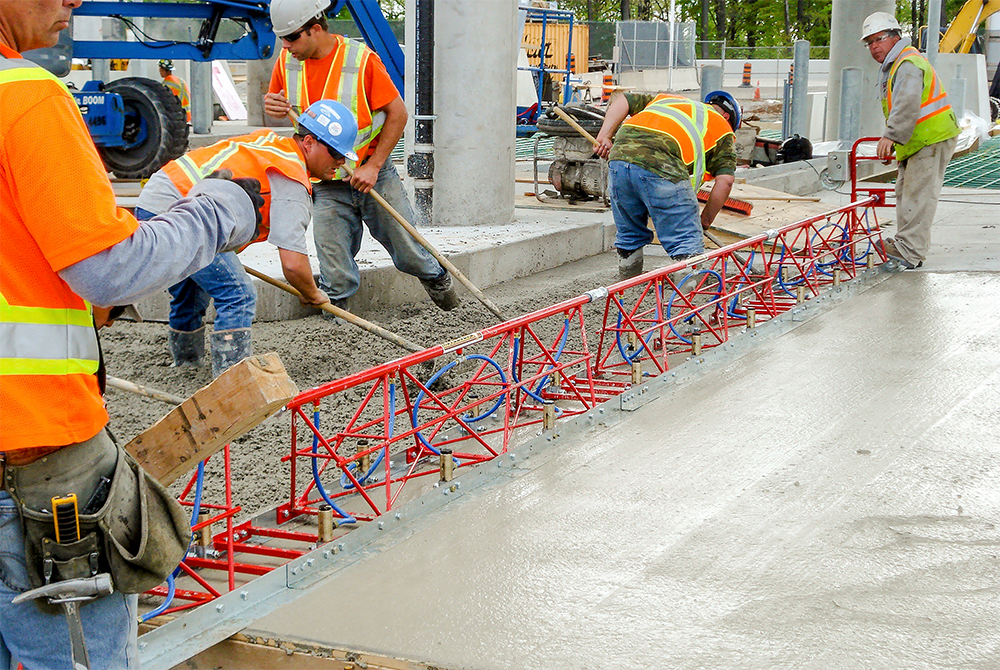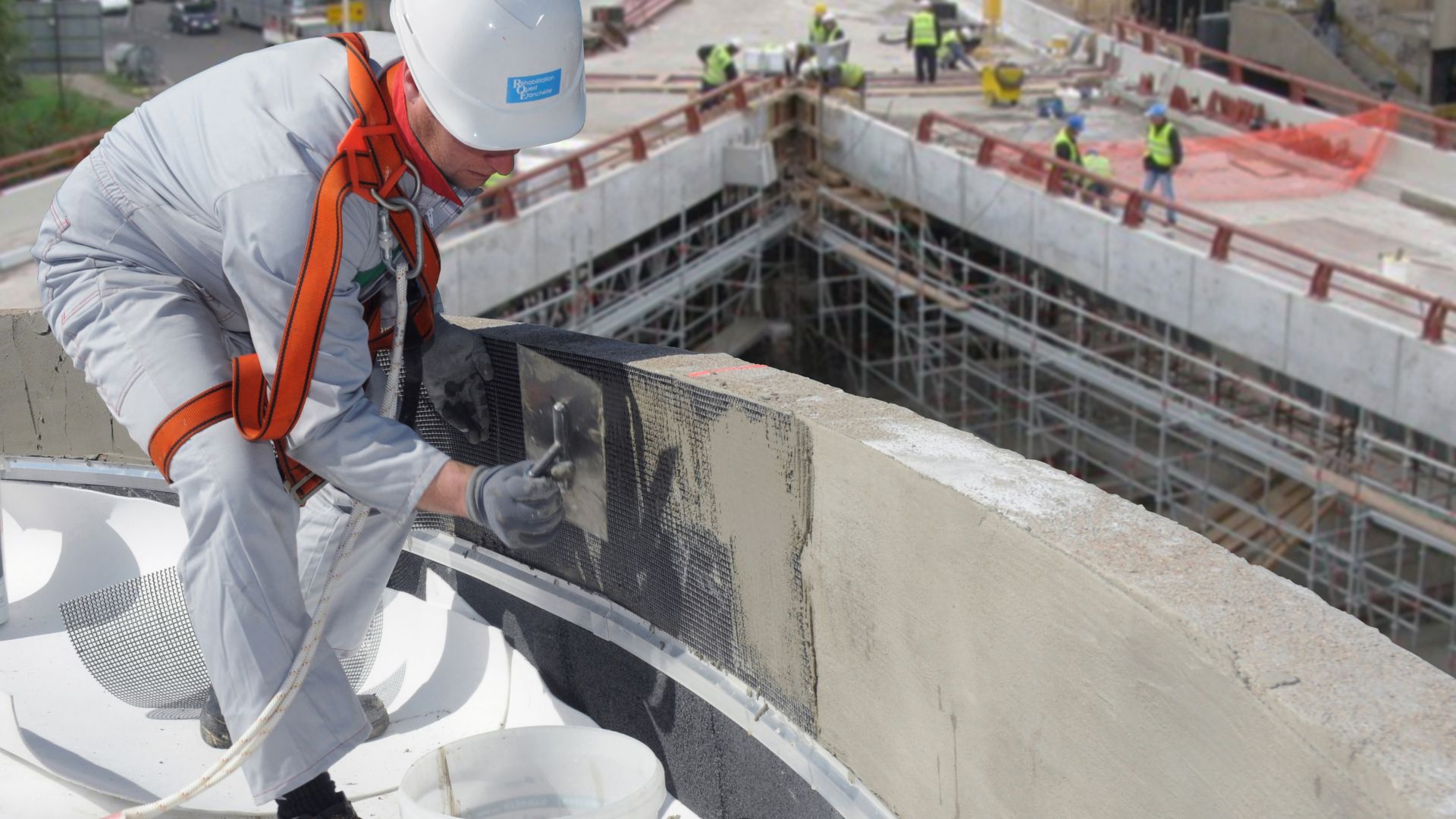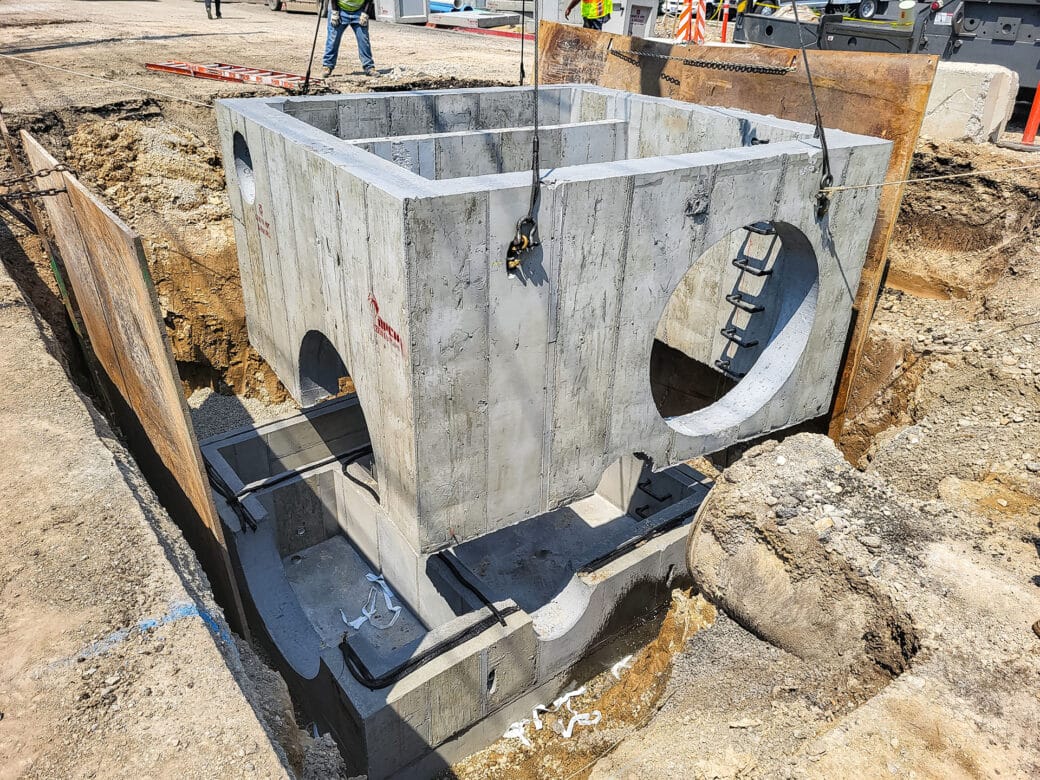Understanding the Various Applications of General Engineering Concrete in Diverse Industries
When you think about the several ways general engineering concrete effects different sectors, you'll locate its applications are both broad and crucial. From supplying tough structures for transportation networks to supporting innovative energy options, this product plays a vital role in shaping our infrastructure. However what regarding its impact on city growth and ecological design? Exploring these facets can reveal a lot more than you could anticipate.
The Duty of Concrete in Building And Construction and Structure Projects
Concrete plays an essential role in construction and building tasks, comprising about 70% of all materials used in modern frameworks. You'll locate it in structures, wall surfaces, and floorings, supplying stamina and sturdiness. When you select concrete, you're choosing for a material that can withstand climate condition, stand up to fire, and support hefty lots. Its adaptability allows for numerous applications, from household homes to towering skyscrapers.Mixing concrete with ingredients can enhance its homes, enhancing workability and setting times. You can additionally mold and mildew it into different shapes, permitting creative thinking in layout. As you deal with your projects, take into consideration the ecological benefits of using concrete, such as its capacity to minimize energy intake in structures. In general, concrete's reliability and flexibility make it a foundation of the construction sector, making sure that structures are not just practical however additionally risk-free and long-lasting.
Framework Advancement: Roads, Bridges, and Passages
When it pertains to infrastructure growth, roads, bridges, and passages are crucial parts that link communities and assist in transportation. You rely upon these structures daily, whether you're travelling to work or taking a trip fars away. General design concrete plays a vital role in their building and durability. Its stamina and versatility enable designers to develop durable roadways that stand up to rush hour and rough weather condition conditions.Bridges, usually spanning rivers and valleys, need specially developed concrete to assure safety and durability. The usage of reinforced concrete in tunnel building not just supports considerable weight however also boosts resistance against water seepage and ground movement.

Concrete in Transportation: Enhancing Mobility and Safety
As you browse via dynamic cities and country roads, the role of concrete in transportation becomes evident, substantially boosting both flexibility and safety. Concrete's sturdiness assurances that roads, paths, and bridges hold up against rush hour and extreme weather condition problems. This longevity minimizes the demand for regular fixings, maintaining your trips smooth and reliable.In enhancement, the layout flexibility of concrete enables ingenious structures like walkways and tunnels, which effectively lower blockage and improve website traffic circulation. You'll discover that concrete surfaces likewise offer better grip, decreasing the chance of mishaps in wet conditions.Moreover, making use of concrete in railways helps preserve stability and safety and security for trains, making your journeys extra effective. Overall, concrete's payments to transport not just enhance your wheelchair but additionally considerably bolster public security, reflecting its necessary function in the framework you depend on day-to-day.

Power Sector Applications: From Power Plants to Renewable Energy
In the energy market, concrete plays a substantial duty in the construction and operation of power plants and sustainable power installments. You'll locate it essential for building sturdy foundations, supports, and containment structures that endure extreme conditions. In thermal power plants, reinforced concrete structures guarantee security and sturdiness versus heats and pressure. West Coast General Engineering commercial concrete Rancho Cucamonga.When it pertains to renewable resource, concrete is vital for wind turbine bases, solar panel mounts, and hydroelectric dams. It gives the security needed to harness energy effectively. You could not understand it, however the concrete used in these applications is specially created to fulfill particular performance standards, like longevity and resistance to ecological elements
Innovative Concrete Solutions in Environmental Design

The Effect of Concrete on Urban Advancement and Landscape Design
Concrete plays a necessary duty fit metropolitan advancement and landscaping, influencing everything from infrastructure resilience to aesthetic appeal. When you consider cityscapes, concrete frameworks like bridges, roadways, and structures come to mind, offering a durable foundation for city life. You'll see just how properly designed concrete pathways and plazas enhance public rooms, making them extra welcoming and functional.In landscaping, concrete offers versatility, making it possible for imaginative styles for outdoor patios, retaining wall surfaces, and attractive functions. You can create unique exterior areas that blend seamlessly with nature while keeping structural integrity. In addition, concrete's capability to endure weather extremes warranties durability, reducing the demand for regular repairs.
Future Fads and Improvements in General Design Concrete
As urban landscapes advance, the need for innovative concrete options is driving developments as a whole engineering. You'll notice patterns leaning towards environmentally friendly materials and sustainable techniques. Researchers are concentrating on establishing high-performance concrete that lowers environmental effect without giving up strength.Next-gen ingredients and blends, like recycled aggregates and bio-based products, are obtaining grip, boosting durability and reducing carbon impacts. Smart concrete modern technology is also emerging, incorporating sensors that keep track of structural health in real-time, permitting for proactive maintenance.You might discover that 3D printing with concrete is ending up being a lot more practical, enabling complicated layouts and faster building and construction timelines. Furthermore, the integration of self-healing concrete is on the surge, ensuring durability and lowering repair expenses.
Regularly Asked Questions
What Are the Environmental Effects of Concrete Manufacturing?
Concrete production generates considerable carbon emissions, takes in water, and diminishes all-natural sources. You can reduce these effects by checking out lasting choices, enhancing mix layouts, and including recycled products to reduce your environmental footprint and boost sustainability.
Just How Does Concrete Compare to Various Other Building Materials?
Concrete's sturdiness and toughness often outperform materials like wood and steel. It's versatile, cost-effective, and energy-efficient, but its ecological effect can be significant. You'll want to consider these factors when choosing structure products.
What Are the Various Kinds of Concrete Available?
There're a number of sorts of concrete readily available, including standard, enhanced, high-strength, lightweight, and decorative. Each kind offers particular objectives, so you can select the one that finest fits your task's requirements and demands.
Exactly How Is Concrete Recycled and Recycled in Construction?
You can recycle concrete by squashing it right into aggregate, which you after that reuse in brand-new building projects (West Coast General Engineering industrial concrete Rancho Cucamonga). This process minimizes waste, decreases prices, and lessens the ecological impact of sourcing brand-new materials for your builds
What Precaution Are Required When Collaborating With Concrete?
When collaborating with concrete, you must wear safety gear, like gloves and safety glasses, assurance proper air flow, and make use of secure lifting methods. Always comply with safety and security guidelines to avoid injuries and maintain a secure functioning setting.